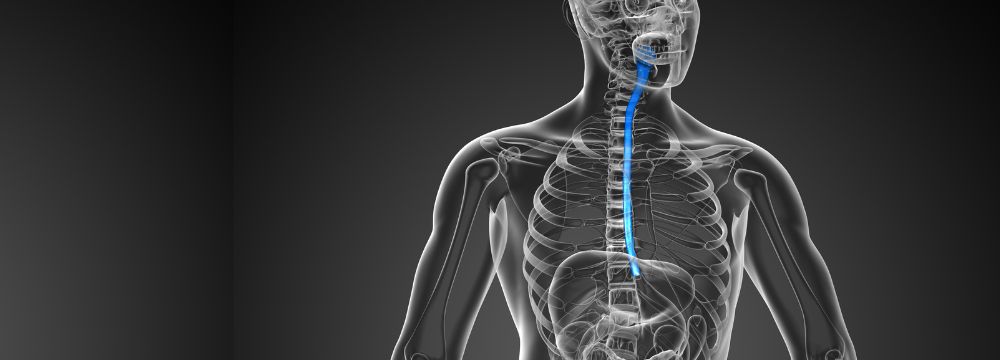GERD
For the past several decades, a procedure known as a fundoplication has been the gold standard in care for Gastroesophageal Reflux Disease or GERD also known as chronic acid reflux. About 20-30% of all Americans suffer from chronic acid reflux and most are prescribed PPI’s or proton pump inhibitors which reduce the amount of acid produced in the stomach. However, these medications, despite now being over the counter, are indicated for only about six weeks of use. Many patients take these medications for months or even years until they opt for a more permanent solution to their problem. PPIs and other acid reducing or blocking medications come with a host of potential side effects, which we will discuss in a separate blog.
Who Benefits from a Fundoplication?
For patients with moderate to severe GERD or cases that are not well controlled with medication or lifestyle change, the fundoplication is often a fantastic option. During the procedure, the upper part of the stomach is wrapped around the lower part of the esophagus to put pressure on the malfunctioning Lower Esophageal Sphincter or LES. The stomach is then sutured to create permanent pressure on the LES. After a few weeks of recovery, most patients are GERD free and virtually all patients have a significant improvement. The original fundoplication, known as the Nissen Fundoplication is a 360 degree wrap of the stomach around the esophagus. However, a complete wrap around the esophagus is not always necessary. As a result, partial fundoplications including the Toupet, with a 270-degree wrap, and the Dor with 180-to-200-degree wrap were introduced to minimize some of the side effects associated with a complete fundoplication.
The LINX Reflux Management System
The LINX Reflux Management System was introduced to address some of the shortcomings of a traditional fundoplication. Rather than surgically altering the GI system, the LINX device is a simple titanium-beaded bracelet with a magnetic clasp about the diameter of a quarter. this bracelet is placed around the LES during a quick 15–20-minute outpatient procedure. Your surgeon will size the device appropriately based on your anatomy and customize the device to offer the appropriate amount of restriction. Once the clasp is magnetically closed, the magnetic properties allow for some give as the food and drink passes through the esophagus.
Which procedure is better?
The final determination on which procedure he will undergo will be made in consultation with your surgeon. However, as a general guide, anyone with a paraesophageal hernia, where the stomach pushes up into the chest cavity, and lodges next to the esophagus, will necessarily need a fundoplication. For many patients who are looking for relief from GERD, there will be the option to choose with the recommendation of your surgeon. Some of the benefits of the LINX Reflux Management System over a fundoplication include:
- LINX requires less operative time at only 20-30 minutes versus 1 hour or more for a typical fundoplication.
- A fundoplication requires about six weeks of recovery with a modified diet to allow the stomach to heal. On the other hand, the LINX encourages a normal diet from the start and patients do not have to change their lifestyle for long after surgery.
- The fundoplication is held in place with sutures. The sutures may eventually fail, returning the stomach to its original form, at which point the patient may no longer receive the benefit of the procedure.
- Patients who need to burp or vomit will have an easier time doing so with the LINX system that allows for more give. While many patients will still experience gas-bloat syndrome, it is certainly minimized versus fundoplication.
- If the LINX device is explanted, there is anecdotal evidence to suggest that scar tissue formation around the LES offers some residual compression. Therefore, even though the LINX system has been removed, the patient may still experience improvement in their GERD.
While all the above benefits of the LINX system seem very compelling, there are also reasons to choose a fundoplication. These include:
- As mentioned before, all paraesophageal hiatal hernias will be repaired with a fundoplication as this cannot be done with a LINX.
- LINX is an implanted device, which may make some patients uncomfortable. On the other hand, a fundoplication does not require an implant.
- Because LINX is a mechanical device, there is the possibility of failure including slippage, erosion into the esophagus or device failure. In these cases, the device may need to be explanted.
- While short- and medium-term data is available, we do not have much data 10 years out.
- Since links is a relatively new procedure, insurance coverage may vary between policies and companies. It is important that you contact us to learn more about insurance coverage as it relates to your specific policy.
- You cannot have an MRI with a LINX device implanted.
As you can see, each procedure has several benefits, but also comes with certain considerations. Your next step is to speak to one of the highly skilled general surgeons here at MIIS to learn more about which procedure may be right for you








